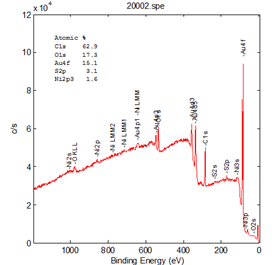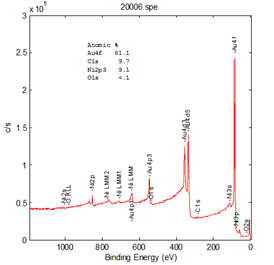- Testing
- Morphology Observation
- Microstructure Analysis
- Surface Element Analysis
- Surface Foreign Body
- Component Analysis
- Mechanical property test
- Thermal Analysis
- Welding Qualification
- CT Scan
- Nondestructive testing
- Cross Section Analysis
- Coating Thickness
- Flame Retardant Test
- Abration Test
- Coating quality inspection
X-ray Photoelectron Spectroscopy (XPS)
| EDS | FIB |
| AES | XPS |
| D-SIMS | TOF-SIMS |
1.X-ray photoelectron spectroscopy
X-ray photoelectron spectroscopy(XPS) is an analytical method about surface, it use X ray to radiate sample and make a stimulated emission of inner electron or valence electron of molecular or atom, the stimulated electron is called photoelectron which have the information of determinand and can be detected in energy and quantity. The main application of XPS is by measuring the building energy of electrons to identify chemical property and component. The depth of photoelectron comes from the surface is 10nm and photoelectron only have the chemical information of surface. Because of small analysis area, shallow analysis depth and nondestructive, XPS is widely used in research of metal, inorganic material, catalyst, polymer, coating material ore, as well as process of friction, lubrication, adhesion, corrosion, coating and catalytic oxidation.
2.What can XPS do for customers in product quality?
(1)When the product surface has tiny foreign body, and regular component testing method can't reach accurate qualitative and quantitative analysis to the foreign body, we can choose XPS.XPS can analyseforeign body composition and valence state of elementof 20nm in diameter, thus we can confirm the chemical state and offer accurate data for the mechanical study of failure analysis.
(2)When the product surface film is too thin to use normal test for thickness measurement, we can choose XPS to analyse, and the use of the deep sputtering function help us test ≥20 nm thick film.
(3)When product is multilevel, every film need to be analysedthickness and composition, D-SIMSis accurate.
(4)When the surface of product exits different valence states of same element, conventional testing can’t distinguish the rate of different valence states, XPS is valuable to be taken into account.
3.Announcement in XPS
(1)Samples size 1×1×0.5cm, too big samples are unacceptable
(2)Avoid the contact of hands and tools with position which need to be tested, the samples should be put into vacuum package or separate with external environment to avoid polluting.
(3)Test depth is too shallow, so the samples that have been sprayed god can not be analysed. Insulating samples is unacceptable, only conductive samples are good.
(4)Element analysis scope Li-U, only inorganic matters, no organic matters, detective limit is 0.1%.
4.Application examples
Sample information: the gold plaque of PCB surface has been polluted, client wants to analysed the pollutant and confirm the type.
Testing spectrogram:
 |
 |
Conclusion:
the corrosive element of S was found on the surface, but there was no S in the 10nm below surface, thus S was confirmed to be pollutant.
- Learn more
- Qualification and honor
- Contact Us
- Contact Us
MTT Shenzhen
Tel: 400-850-4050
Fax: 0755-2782 1672
Email: marketing@mttlab.com
MTT Suzhou
Tel: 400-118-1002
Fax: 0512-6275 9537
Email: marketing@mttlab.com
MTT Shanghai
Tel: 400-118-1002
Email: marketing@mttlab.com
MTT Dongguan
Tel: 400-116-1002
Email:marketing@mttlab.com
